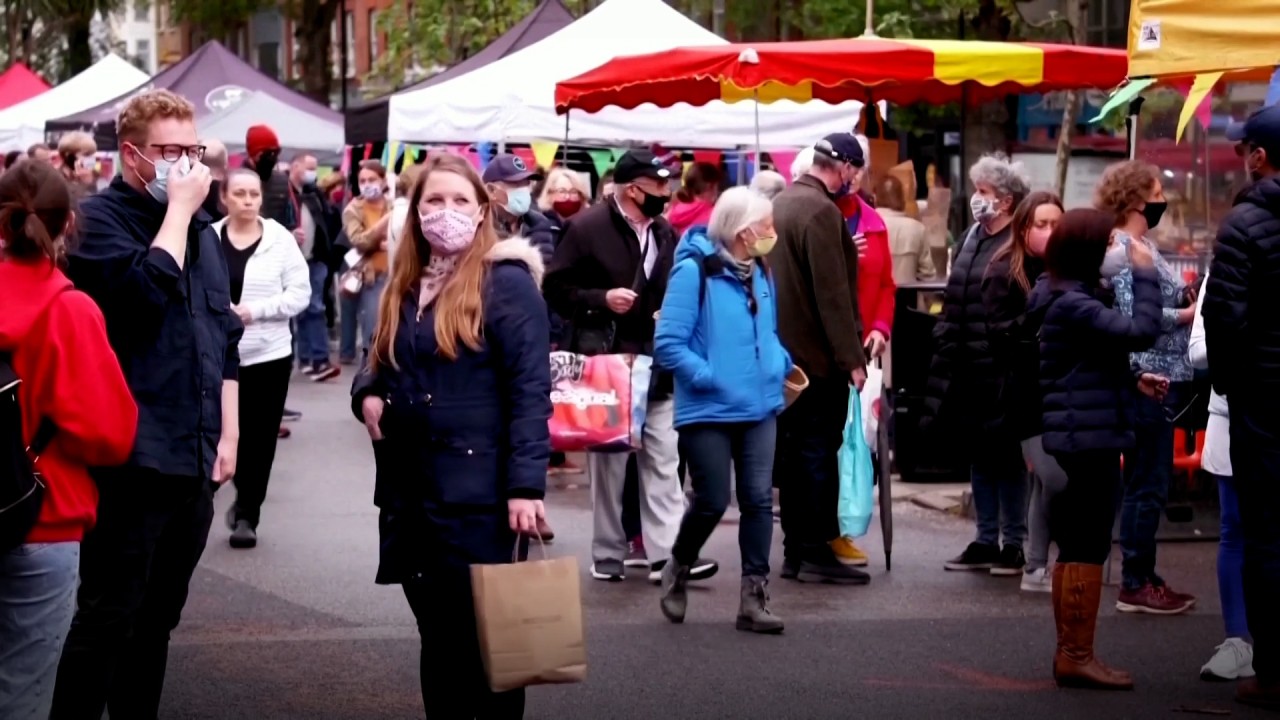
Covid-19 in 2022: into the known unknowns of ending the pandemic
- The path back to global stability is through vaccinations and limiting spread of the virus but it all depends on how well immunity and societies hold up
- New variants will mean a fresh look at old assumptions about the disease transmission
“We have the tools now that can take the severe spectrum of disease out … We can take the death out of Covid-19 and we can also reduce the spread,” Van Kerkhove wrote in the journal Nature Medicine this month.
Experts largely agree that limiting transmission while boosting global immunity through widespread vaccination – before any more dangerous variants emerge – is the path back to global stability.
But it all rests on two known unknowns: how the virus evolves and provokes our immune system, and how societies respond.
“Controlling this virus was always in our control, it remains in our control,” Van Kerkhove said.
“We’re going to have to revisit the general assumptions we had coming into this pandemic,” said Osterholm, who is director of the University of Minnesota’s Centre for Infectious Disease Research and Policy.
“A lot of people assumed this would be like an influenza pandemic – two years and you’re out … We are far from done with this pandemic, what we don’t understand is how it’s going to roll out in the days to weeks to months to come. We just don’t know.”
One reason is the evolutionary curveballs that the virus has thrown, making it uncertain whether, like seasonal influenza, the virus will evolve to evade vaccines over a longer period of time, or have more abrupt changes.
Already in the space of a year two mutant strains, Alpha and Delta, each more transmissible than the other, emerged and became dominant, only to be followed by both heavily mutated and highly transmissible Omicron.
Gates thinks pandemic’s ‘acute phase’ will end in 2022 despite Omicron
The latest rapidly spreading variant appears able to reduce immune response from vaccination, but not evade it completely.
“Nobody knows when that [next immune escape variant] is going to arrive, but also nobody knows if it’s going to have a big leap in immune escape, like Omicron, or a small step, in the way that [seasonal] influenza viruses typically have,” said evolutionary biologist Maciej Boni, an associate professor at Penn State’s Centre for Infectious Disease Dynamics in the United States.
If the coronavirus behaves like influenza – where researchers around the world monitor the strains and modify vaccines when one eventually can significantly reduce protection – “we can just update the vaccine every couple years, vaccinate people and move on”, Boni said.
“But given that we’ve been surprised three times, now I don’t know that any of us can really predict what 2022 and 2023 will look like.”
Covax chief warns against replay of Covid-19 vaccine nationalism
Some early evidence suggests the strain could cause less severe disease than the Delta variant. But if that is the case, it is unclear whether it is due to the virus itself or existing immunity. Either way, rapidly rising case numbers have caused alarm globally that they will lead to a surge in hospitalisations.
“[We] predict that the new variant will spread very rapidly globally, disproportionately impacting communities with limited access to treatments and vaccines, and different age and health profiles,” a group of leading health experts on the Global Preparedness Monitoring Board said on Wednesday.
“This will put enormous strain on health systems everywhere.”
A critical test will be how well existing immunity can keep those hospitalisations and deaths to a minimum in a world that has been rolling out vaccines for a year and coping with infections for two.
Bringing these severe outcomes to an acceptable level has become the benchmark for success in ending the pandemic crisis, given that scientists no longer feel the virus can be eliminated any time soon.
“Counting the number of infections after vaccinations is less important than monitoring the outcome of infection,” said infectious disease epidemiologist David Heymann, a professor at the London School of Hygiene and Tropical Medicine.
Heymann said governments could best understand variants’ effects by tracking ICU admissions and deaths associated with infection, which the existing vaccines were designed to prevent.
Instead, the goal is to build enough “population immunity”, resulting from both vaccination and natural infection, to protect people from serious illness and death if they were infected subsequently. This would, in turn, stop hospitals from being overrun, and ideally cause infection to become more like a common cold or flu, he said.
Because breakthrough infections are typically shorter and milder, the infected may be less likely to pass the pathogen on – but it is unclear how true this is for the highly transmissible Omicron, with more data needed, experts say.
This, along with other measures like social distancing, could cut down on the scale of the pandemic and the ability for variants to emerge.
“The key to controlling this is increasing our vaccine coverage … so those cases that do occur are less severe than they would have been, and those very severe cases that we couldn’t prevent [can] be treated in the hospital with the resources that they need, without … a complete strain on the health care system,” said immunologist Ashley St John, an associate professor at Duke-NUS Medical School in Singapore.
“Then, if we start seeing that there are new variants that cannot be managed as efficiently, we can come up with strategies to address that.”
Those strategies could include giving boosters and developing treatments, variant-tailored doses or next-generation vaccines that could cover more variants or complement the existing immune response, she said.
As Omicron looms, Africa battles to get vaccine shots in arms
But high vaccination levels was a bar too high for the world in 2021, despite early pledges for vaccines to be a global public good and billions of doses rolling off production lines.
An estimated 11 billion shots will be made in 2021, according to analytics firm Airfinity. But by last month some 80 per cent of the doses had gone to wealthy Group of 20 nations, while 0.6 per cent went to low-income countries, according to the WHO. Boosters – meant to handle waning protection against infection – have been given to people at low risk of infection in rich countries before some in poorer countries have got their first shots.
Even rich countries like the United States and Britain have reached just over 70 and 80 per cent, respectively, of those over 12 fully vaccinated, leaving many without vaccinated immunity – thought to be superior to protection from previous infection.
“We’re very far behind, we still have huge pockets of people that are unprotected regardless of the vaccine available, and the complexities of that issue are enormous,” said vaccinologist Jon Andrus, an adjunct professor of global health at George Washington University’s Milken Institute School of Public Health in the US.
The complexities include creating public demand for the doses and making sure they can reach people in the field. In terms of supply, another issue is how best to allocate doses to prevent deaths.
“We don’t want to overwhelm supply issues by pushing booster doses into people that benefit from [a regular course of] vaccine. It’s a question of balancing and getting to populations where coverage is very very low, particularly in Africa,” he said.
WHO calls decision to move forward with pandemic pact ‘cause for hope’
Ensuring fairer and wider access means expanding production and sharing more doses, experts say. And if that does not happen, the door could be open for large outbreaks, deaths and severe disease in countries that do not have enough shots, and the potential for vaccine-dodging variants to spread from there to those that do.
Osterholm said there were parallels with the endemic virus HIV. “In the high-income countries, access to antiretroviral drugs has fundamentally changed the picture of HIV/Aids, but it hasn’t done that for much of [the rest of] the world.”
While such inequities could persist with Covid-19, Osterholm said he also expected richer countries to continue to see annual excess deaths in high-risk groups from Covid-19 even when there was high immunity, as was the case with seasonal flu.
Those countries will have to gauge their tolerance for those deaths as they decide how to relax restrictions and move into an endemic phase with rising immunity.
“We will have 50 to 60 thousand people a year die from seasonal influenza in the United States … We don’t shut down our economy, we don’t close businesses, we don’t have mask mandates. It was a decision that we made to accept that level of impact,” he said.
“You can argue that part of that [decision-making] has to do with your health care systems – if they bend but don’t break.”






